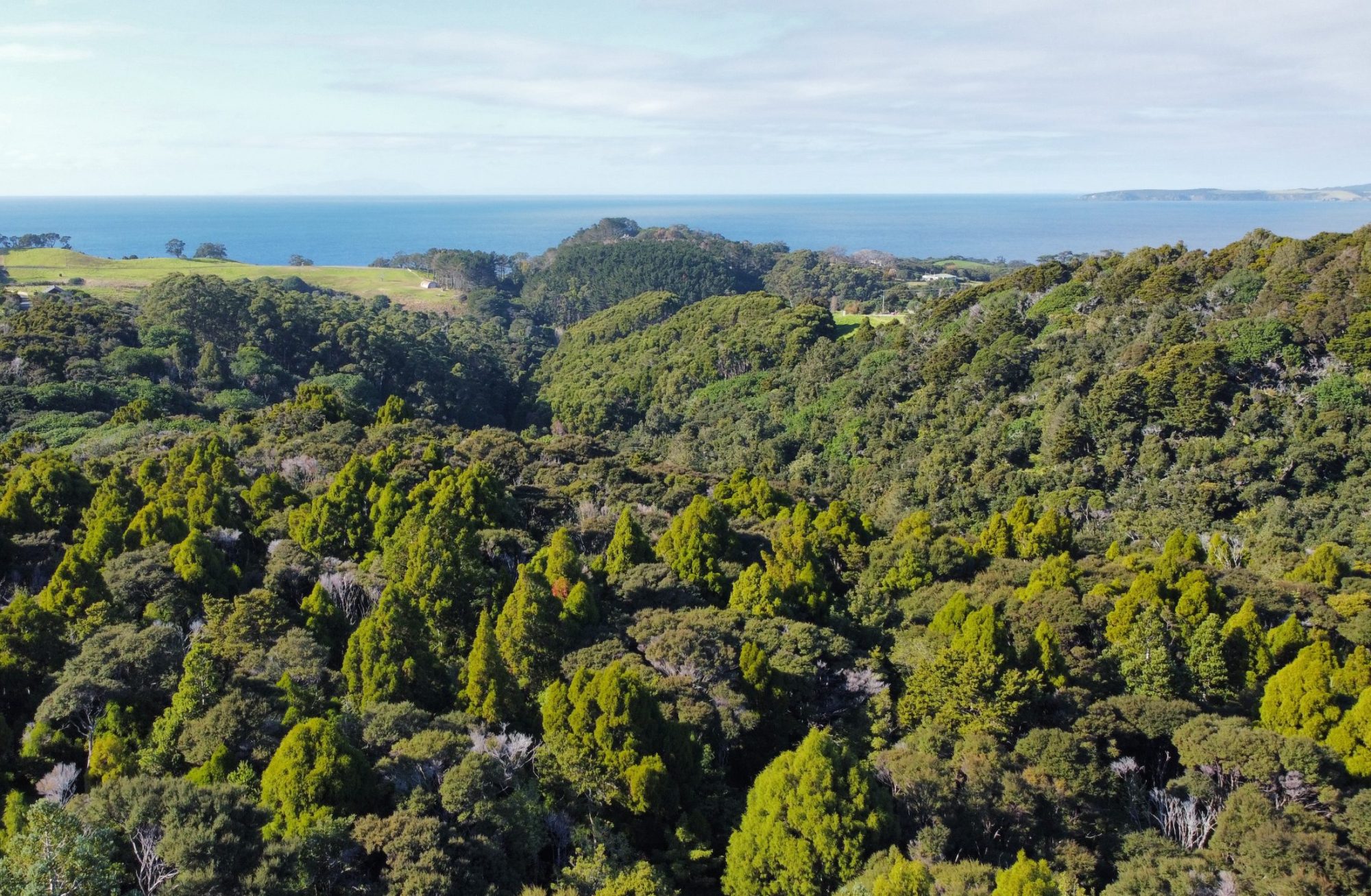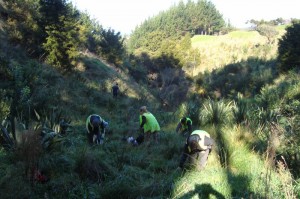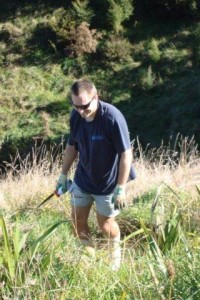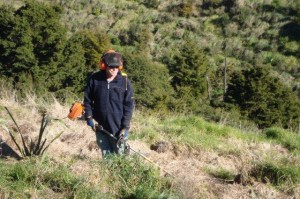The waterfall at the top of the valley has stopped flowing and the stream bed is dry after nearly two months of no decent rainfall in the area.
Trish and I weeded for three hours at the top of the valley in the more aptly named dry-land rather than wetland area.
The weeds came out quite easily and we filled one of the large black weed bags in no time at all.
In the afternoon Jo Evans and I met with Darryll Hollamby, a roading engineer and technical services support person for the paper roads in the Rodney area.
The responsibility for weed control on council owned paper roads has been passed around a bit and, according to Darryll, there is next to no money available to manage these areas of land.
We showed him the area of concern and he said he would endeavour to look into the problem but made no promises that funding would be made available.








